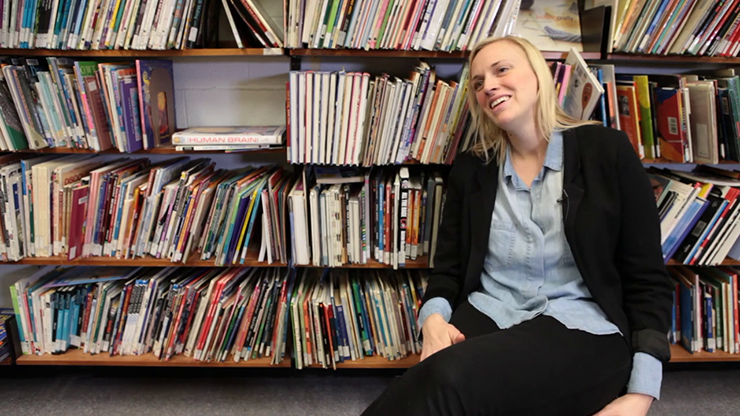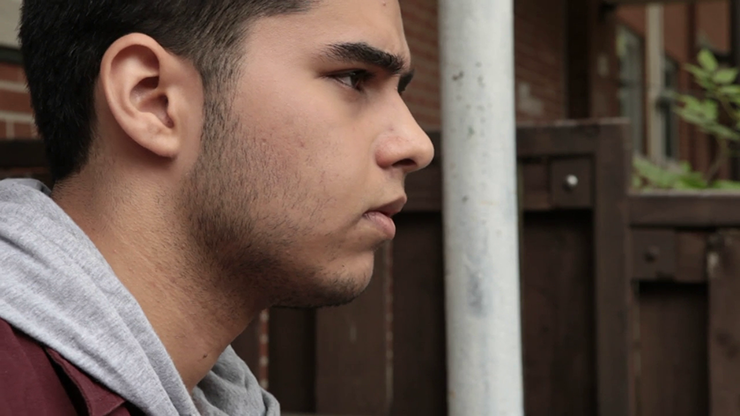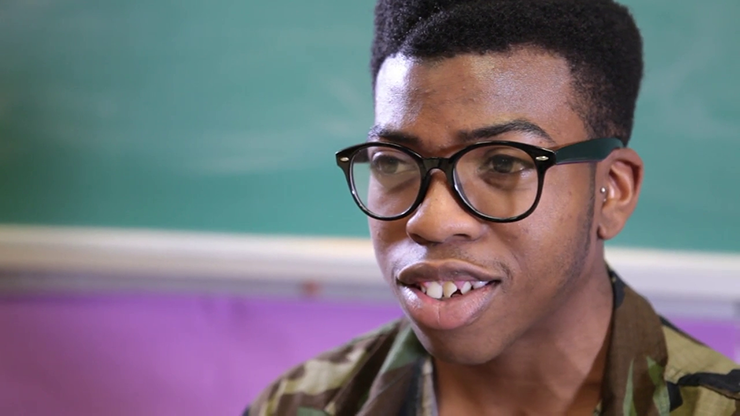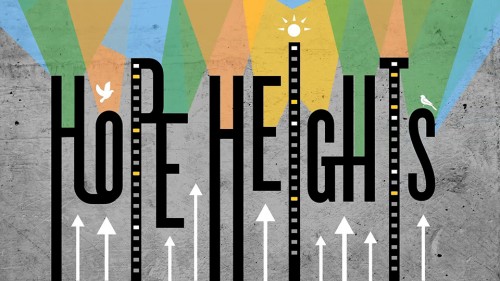“I remember sitting in the staff meeting where the principal told Michael what was going to happen and I started to cry,” says Robin Phillips, a teacher of eight years at Toronto’s Lawrence Heights middle school.
“I felt so upset that now he was going to go to another school and be that labelled kid that came out of a transfer.”
It was during her first year when the very green middle school teacher came in contact with the boy that had a reputation for being a handful, speaking back and was referred to as ‘having a chip on his shoulder.’

Fast forward a few years later and Phillips notices a familiar young boy now turned a man. He’s wearing a puffy vest and a pair of shades covering his eyes. She doesn’t notice him right away, but he recognizes her immediately.
“I realized who was staring at me, it was Michael, and we embraced. He told me all the great things that was happening in his life and that he was a father,” says Phillips.
“I told him that I knew he was going to be okay, and he said, ‘Miss, I knew you knew.’ His story is the kind we should be hearing about.”
That single story – a relatively small account of the goodness shared in most communities has often been overlooked in favour of the negative narrative – the kinds that maintain systems of oppression and make the privileged feel comfortable in their current dwellings.
Lawrence Heights, which is commonly referred to as “The Jungle”, often receives a negative reputation for being a home to drug dealing and gun violence. So back in May 2013, Phillips started a campaign on Indiegogo to curb the redundancy of the media perspective that has lost touch with those who live in the community.

Her answer came in the form of a documentary suitably called Hope Heights, which was directed by Marc Magnusson and screened at the Regent Park Film Festival late last year.
It was a venture that took upwards of $10, 000 to create – a figure enthusiastically met by those that were also growing tired of the same old narrative.
“I taught in Lawrence Heights so long that the little boys I knew during my first year there are now 20 and 21 years old and I still feel bonded and connected to them, and that’s how the movie started,” says Phillips.
“I would run into them at the mall, Lawrence Square or at the community centre and I started to talk to them about this idea, and they said ‘yeah Miss, we should do this, we should tell this story’”
Wares Fazelyar, a longtime resident, current University of Toronto student and Pathways to Education employee, was one such resident.

He came in contact with Phillips through his shared frustration with the one-track, single story message being told about his community as he knew not all Lawrence Heights residents carry a gun or deal drugs like mainstream media so often portrayed in the past.
“Once you take a moment to look around, you realize that we’re just people trying to get along with our lives, get an education, go to school and get jobs,” says Fazelyar.
“The image certain people and the media portrays of our area is not reflective of everyone in there. I remember seeing headlines every time something went down about Black on Black violence. Yes, it does happen, but it doesn’t embody that of the entire community.”
It’s an opinion that was shared throughout the film, which matched real names to real faces and allowed them to share their own experiences, first hand, as opposed to a second hand source speaking for them.
A collective of smiles, laughter and seriousness embodied the film while simultaneously displaying the mutual frustrations of a caricature their community has become associated with.

Phillips has always been intimately familiar with this same brand of misrepresentation, far before the thought of producing a film even entered her mind.
As a native of Calgary, Alberta, she grew up in a stigmatized quadrant of the city. It was only when she moved to Toronto, that it became an aim of hers to find a place that others equally chose to shun, because she already knew how it felt as a kid growing up in a neighbourhood with an undeserved bad rap.
“I constantly felt upset because I knew the media was telling a single story. I wondered how it made my 12-year-old boys in my Grade 7 classes feel about their potential, about where they were going,” she says.
“If that’s the one narrative reflected back to you over and over again, especially those kids that are on the edge who have one foot in and one foot out of school already… that ate at me.”
Samuel Sinclair remembers being one such student of Phillips’ during his teen years. Growing up queer, he was never one to be associated with all the in-crowds.
Today, Sinclair speaks with self-assurance, but during those turbulent years of exploring and seeking his identity, he found the messages from mainstream media about Lawrence Heights to be misleading.
“We aren’t defined by where we live; we’re defined by how we live. I feel like people don’t necessarily see that or give us a chance to show them that.” – Samuel Sinclair
“I think a huge misconception is that we’re all comfortable here, that’s not to say that we’re uncomfortable living here, but growing up I know that there are a lot of us young men who see a bigger picture and a greater life outside of the community,” says Sinclair.
“People think we are the community, we are the bad reputation… We aren’t defined by where we live; we’re defined by how we live. I feel like people don’t necessarily see that or give us a chance to show them that.”
The film never attempts to place wool over the eyes of its viewers, as if to suggest that violence isn’t something that happens. But instead the film makes an attempt at displaying the many endeavors of the community to curb future instances of crime.
During the few moments Phillips makes an appearance, at face value she doesn’t look like everyone else, but her demeanor and the way she speaks reveals an authenticity that’s shared among the rest.
“She cares so much, some would say even a little too much for a white woman who gives all this attention and support to young black men in this inner city neighborhood,” Sinclair says.
“At times, she definitely played that supportive mother that some of us young men needed at that time. To have this privileged and outspoken woman really advocate for us black men is something you don’t really see.
“To this day she is still a part of my life and I left middle school a long time ago. That just shows you how much she really cares, not just about the community, but the young men in it.”
Photos Courtesy Of. Hope Heights Film




Comments are closed.